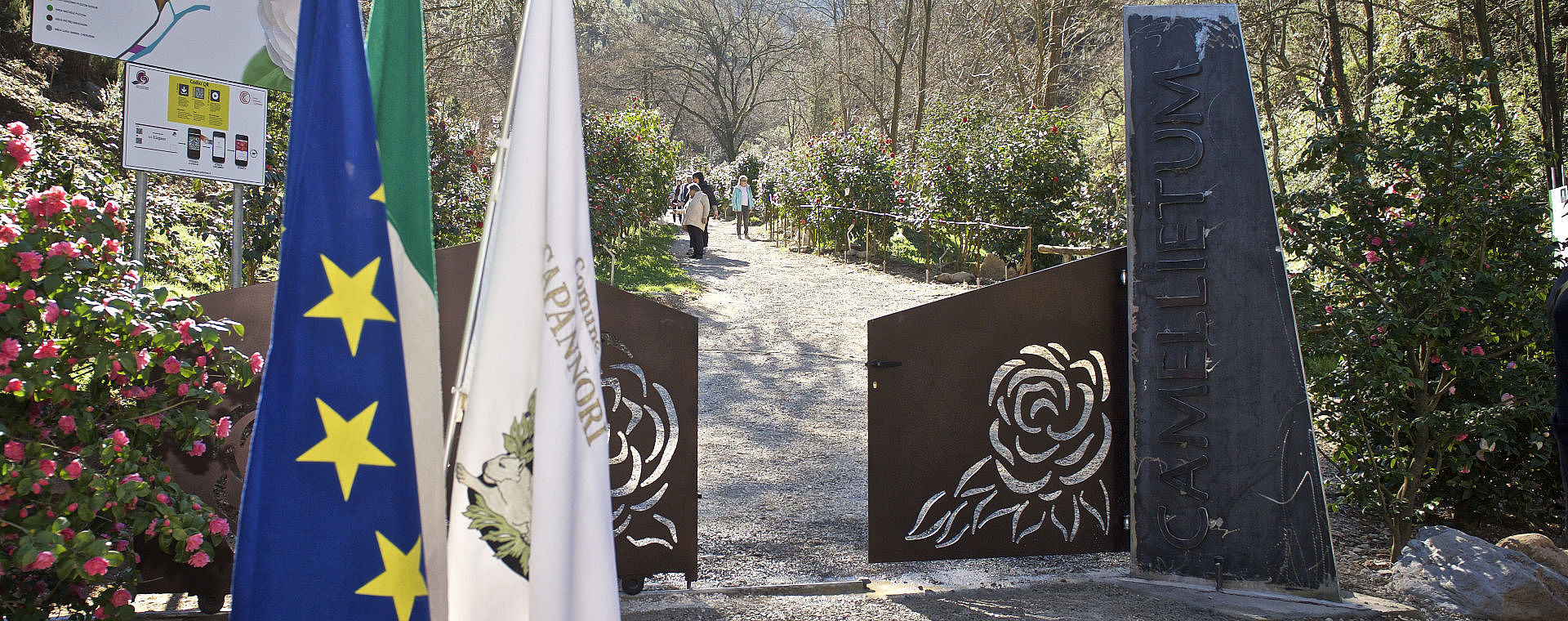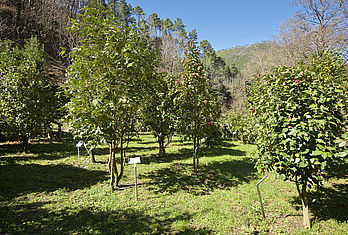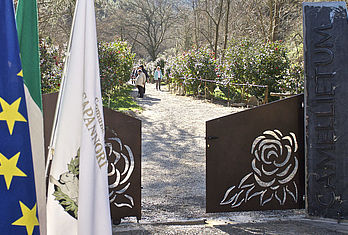The Camellietum of Compito
The Camellietum or camelieto is a place specifically created to have a collection of the various species of camellia, from the most ancient to the most recent ones. It is part of a vast project of improvement of the historical and artistic richnesses of the Compitese area. This project has already promoted the construction of a historical and architectonical itinerary, of a botanical route and of an itinerary aiming to discover the traditional use of water. The Camellietum is located in an area called "kitchen gardens of Ciopino": the word kitchen garden is related to the ancient use of these grounds, while the name Ciopino was the nickname of the owner of this area.
The Camellietum was inaugurated in 2005, after a construction lasted four years.
The idea of the Camellietum was born after a census of all the species of camellias, so to have the complete overview of the cultivations present in the territory of Lucca. Some species are very rare, some are threatened with extinction, but there are financial or professional problems that do not permit the development of the cultures. Who has assumed the responsibility of the camellieto, is also in charge of planting and cultivating the rare species. The real purposeof the camellietum is therefore to preserve every variety of the flower, creating the ideal place where to learn how to properly grow this beautiful plant.
The structure has remained untouched and has four terraced gardens delimited by drystone walls. Also, the environmental context has been well preserved, and mantains the typical wildlife of the territory. The four terraced gardens are delimited by drystone walls that strech for about 1000 mq. They form four indipendent spaces at different heights. The garden can be reached by the road that leads to Monte Serra. On every terraced garden there are different varieties that represent the historical and chronological evolution of the camellia.
- the first low terracing contains the simplest camellias Japoniche, always fertile: alba simplex, rubra simplex and rosa simplex;
- on the second we find the non-Japonica varieties: camellia sinensis;
- on the third we find camellias with semi-double flowers, always fertile;
- on the fourth there are the most complex camellias, the ones with double flowers.
The camellieto is visitable in every period of the year.
or information:
Centro Culturale del Compitese
Via Fonda 1 - Pieve di Compito (Capannori)
Tel./Fax +39 0583 977188 (dalle ore 9.00 alle 13.00)
Mobile +39 3662796749 (ore 9.00-13.00 e 14.00-17.00)
E-mail: info@camelielucchesia.it
Website: www.camelielucchesia.it


